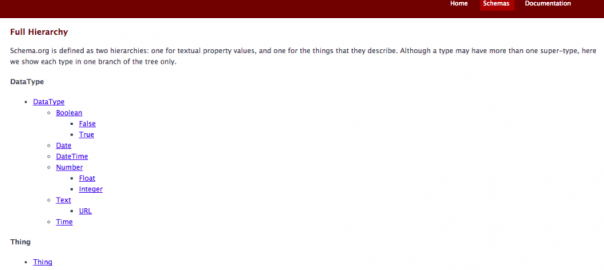Search Engine Optimization (SEO) is a combination of highly technical website elements, content marketing, and promotion. With Google’s regular algorithm updates, there are often considerable adjustments in the technical SEO best practices firms should use to be found in search results. One of these changes is the higher use of rich snippets.
Rich snippets have been a hot topic among SEOs for some time, but for marketers who are less familiar with the technical ins and outs of SEO, we’d like to give some background on how rich snippets can impact your firm’s visibility in search.
This post will outline what rich snippets are, why they matter, and how your professional services firm can benefit by incorporating them into the code of your website.
A Background on Rich Snippets
Any marketer that has had exposure to SEO should be aware of the importance of using optimized, relevant on a website.
Traditionally, this means incorporating specific keywords into the title tags, headers, meta description, and body copy of a page to better communicate to search engines (and users) what your website is about. Once search engines crawl your website and understand the content, your website pages will be indexed and served up in search results.
That being said, the days of going into the back end of a site and inserting hidden keywords are over. There was a time when you could hire someone with some technical SEO background and see an improvement. Insert a ton of keyword-rich anchor text here, buy some links there, and you would see some immediate results.
This same principle applies to rich snippets, as they tell search engines more about what is on a webpage. Rich snippets use a unique set of code to communicate with search engines.
How did rich snippets get their start? In 2011, Bing, Yahoo and Google agreed on a set of schemas, or protocols that would be acknowledged across search engines to help improve the quality of search results and standardize methodologies for telling search engines what is on a page.
Coming out of this rare search engine alliance was Schema.org, a website dedicated to keeping track of the schemas that webmasters can use to tell search engines more about what is on a webpage. The list of schemas has grown considerably in the past four years as new search engine approved protocols are added.
In the most basic terms, Schema.org is a search engine approved dictionary of all the different types of code webmasters can incorporate into their webpages to be found for specific types of searches. The microdata snippets can tell search engines a number of different things, like what links to include below a ranking search result or what kinds of multimedia files are on a webpage.
By incorporating these schemas into the code on a website, businesses can tell search engines more about their pages and deliver more relevant information to the user.
These small but relevant touches can cause a significant increase in the traffic to those pages that feature rich snippets. It can also point users to the pages or pieces of content that would be most relevant to them.
Here are four specific ways B2B firms can implement rich snippets to improve their visibility in search:
4 Ways B2B Firms Can Incorporate Rich Snippets
1) Direct Users to Download Content
Downloadable Content is a key component of an effective B2B lead generation funnel, and with a few steps, your firm can drive increased visibility to content landing pages in search results.
By incorporating rich snippets into your firm’s website code telling search engines to display content landing pages in your rankings, your firm can direct users to your most valuable or relevant content pieces. Increased traffic should result in greater conversions and ultimately more business.
Below is an example of what a rich snippet looks like in search engine results. Search Engine Journal incorporated rich snippets in the code on their website, telling search engines to display a link to their 2014 Beginner’s Guide to SEO below their homepage.

2) Display Multimedia Files
Another key benefit of rich snippets for B2B firms is their ability to display images next to pages that feature multimedia files in search engine results. By inserting a snippet of code, firms can tell search engines that a specific page features a video or image.
Search engines will then display an image of the multimedia file next to the ranking search result. This gives users a better sense of what a video is about, as well as offering information on the length of that video.
In the example below, Neil Patel’s YouTube video, “7 Business Mistakes,” incorporates a rich snippet, which is displayed as a small image of the video directly in the search engine results page.
Using this feature will help drive more engagement and a higher click through rate than ranking results without an associated image.

3) Promote the Visibility of Your Firm’s Events
Rich snippets can also tell search engines more information about events, displaying time and location directly in search results, as well as a link to the relevant landing pages for those events.
This is another great way to increase the visibility of your firm’s speaking engagements or promote the visibility of relevant tradeshows and conferences in which your firm participates.
Moz incorporated rich snippets that are displayed as a list of the upcoming events below their ranking search result page. The date, location and titles of these events are visible in search.

4) Display Your Website’s Architecture
An additional benefit of rich snippets is their ability to tell search engines more about your website architecture. Rich snippets allow search engines to display information on the architecture of your website, which help users to quickly navigate to the pages they want to visit.
Quick Sprout incorporated microdata to display their website architecture, including links to their Blog, About, and University pages. This small feature enhances their company’s presentation in search engine results and improves the user experience by allowing users to quickly access the specific pages they are looking for.

These four applications of rich snippets can give your firm an edge in search results and improve your ability to be found for the pages users are looking for. There are a considerable number of ways your firm can incorporate structured data and rich snippets into the code of your website to improve its visibility. Refer to Schema.org to see the full list of protocols.
Learn more about how to use SEO to get valuable prospects to find your firm online in Hinge’s SEO Guide for Professional Services.
(232)










